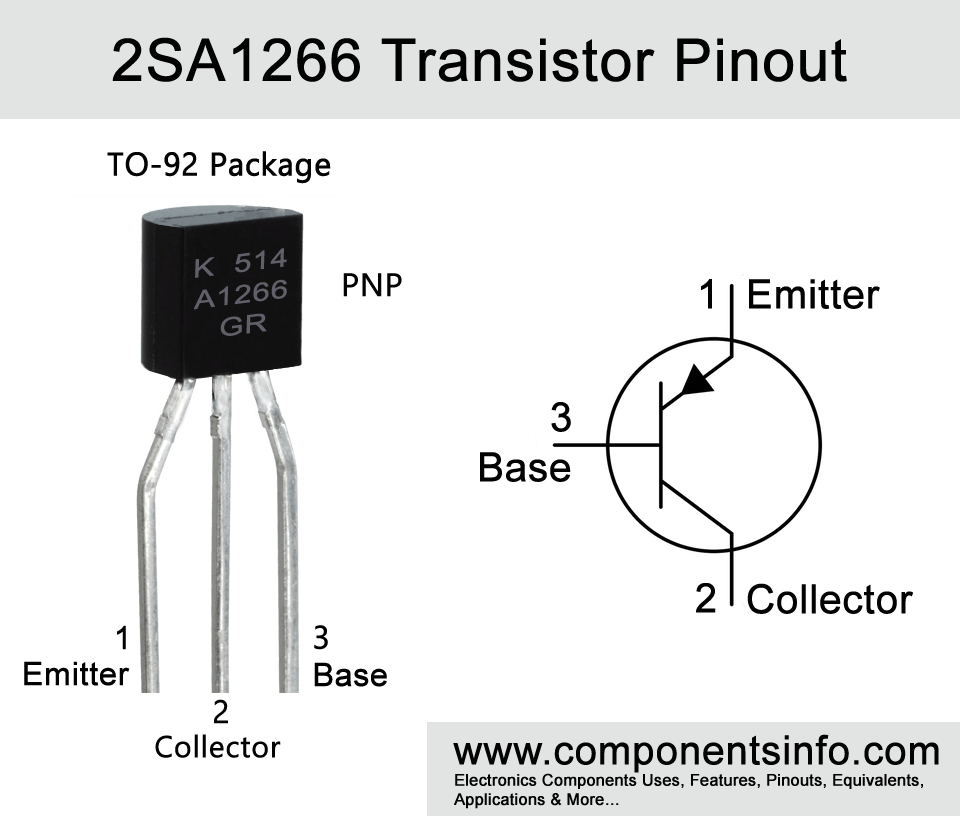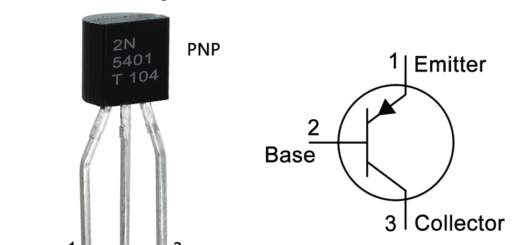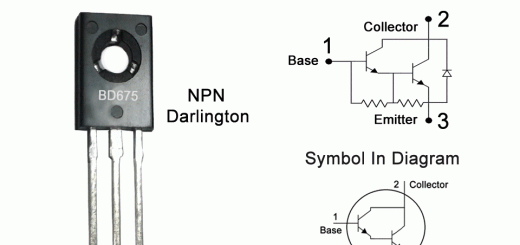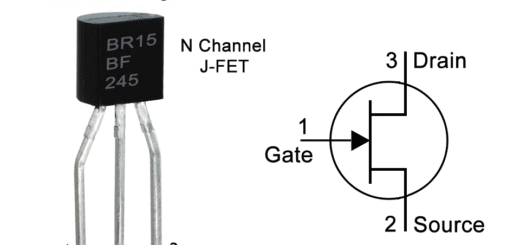A1266 Transistor Pinout, Features, Equivalent, Applications and Other Details
A1266 or 2SA1266 is a PNP transistor BJT transistor. In this post we are going to discuss A1266 transistor pinout, features, equivalent, applications and other details about this transistor.
Features / Technical Specifications
- Package Type: TO-92
- Transistor Type: PNP
- Max Collector Current (IC): -150mA
- Max Collector-Emitter Voltage (VCE): -50V
- Max Collector-Base Voltage (VCB): -60V
- Max Emitter-Base Voltage (VBE): -5V
- Max Power Dissipation (Ptot): 400 mW
- DC Current Gain (hFE): 70 to 700
- Max Storage, Operating & Junction temperature range: -55 to +125 Centigrade
NPN Complimentary
NPN complimentary of A1266 is C3198 (Full part number is 2SC3198)
Replacement and Equivalent
JE9093, 2SA1373, 2SA1193, BC212, 2SA1318, 2SB560, 2SA1114, 2SA1528, 2SA1526, 2SA1524, 2SA1522, 2SB1256
C6093 Transistor Explained / Description
A1266 is a PNP BJT transistor available in TO-92 package. When looking from the front side of the transistor (Where the part number is written) the first pin of the transistor is “Emitter” second is “Collector” and the third is “Base”. The transistor is designed to use in low frequency amplification, audio frequency amplification and low noise amplifier and can also be used as a switch. The transistor has many good features such as it has high DC current gain that is from 70 to 700 which makes this transistor ideal to use in applications that requires a high gain transistor to amplify low level signal, for example, an audio preamplifier or also can be used in other low level signals for example radio signals, digital signals. It also has low noise features, the transistor without low noise capability can also amplify the signal but also amplify the noise with the signal. The good thing about a low noise transistor is that it reduces the noise with the signal and increases the quality of the output signal. It has an excellent safe operating area which means it can handle more stress when it comes to driving it to its maximum limits. It has excellent hFE linearity means it will consistently maintain its current gain in different operating conditions which is good for signal amplification.
Looking at the maximum ratings and electrical characteristics of the transistor, the maximum collector current of the transistor is -150mA, max collector-emitter voltage is -50V, max collector-base voltage is -60V, max emitter-base voltage is -5V, DC current gain is 70 to 700, transition frequency is 80MHz and the max power dissipation is 400mW.
The transistor comes in three different types according to hFE classification. The hFE or DC current gain of each transistor can be determined with the help of the alphabet written after the part number. So if that alphabet is “O” then its hFE will be 70-140, if “Y” then 120-240 and if the alphabet is GR then its hFE will be 200-400.
Where We Can Use it & How to Use
As mentioned above A1266 transistor can be used in audio and other low frequency amplification purposes, low noise amplification and can also be used as a switch. But it is not limited to only these uses and can also be used in a variety of other applications. A list of its few applications can be found below under the “Applications” heading.
Applications
Audio Amplifier Circuits
Low Level Signal Amplification
Audio Preamplifier Circuits
RF Circuits around 100MHz
Switching circuits
Safe Operating Guidelines
Although the transistor can handle stress but for safety purpose we will not provide stress on it so it will provide us good service life or work long life so we will use it 20% below from its max ratings. So the maximum collector-emitter voltage is -50V therefore the load should be under -40V, the maximum collector current is -150mA so the driven load should be under -120mA. The storage or operating surrounding temperature should between -55°C to +125 °C.
Datasheet
To Download the datasheet just copy and paste the below link in your browser.
https://z3d9b7u8.stackpathcdn.com/pdf-down/2/S/A/2SA1266-KEC.pdf



